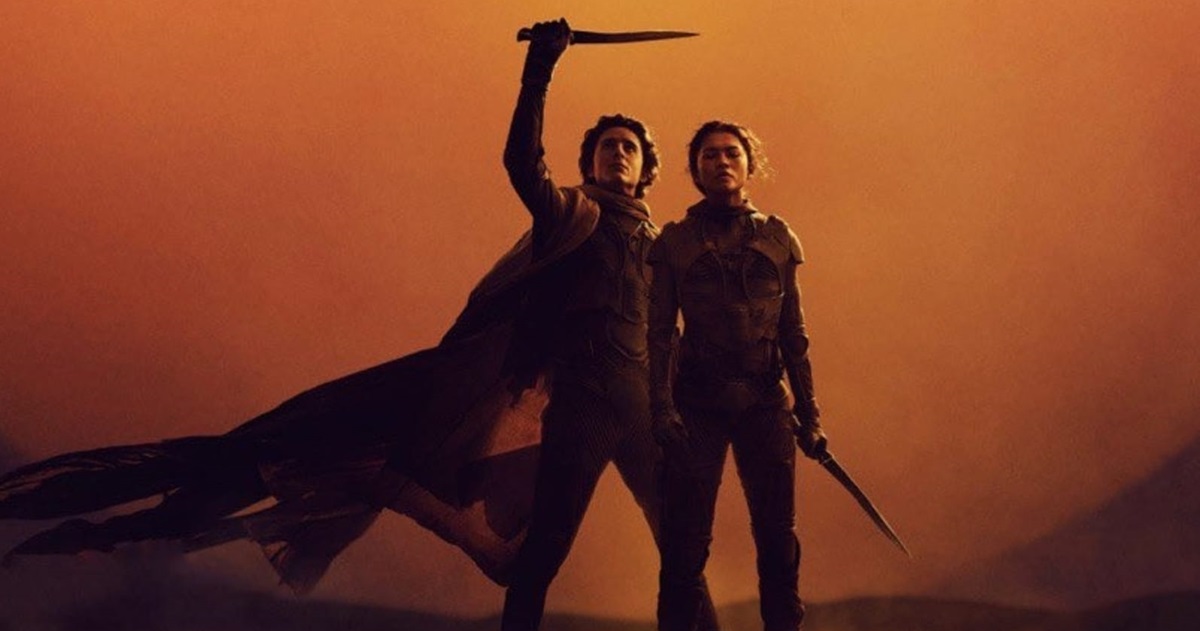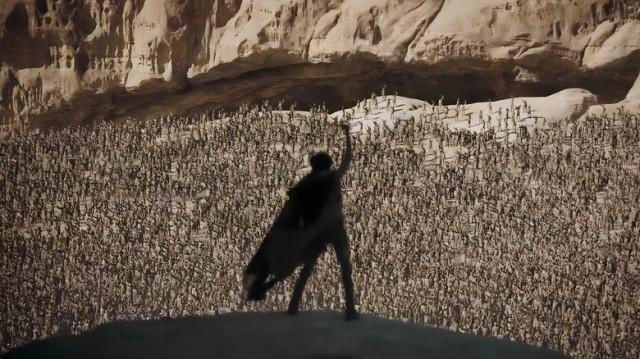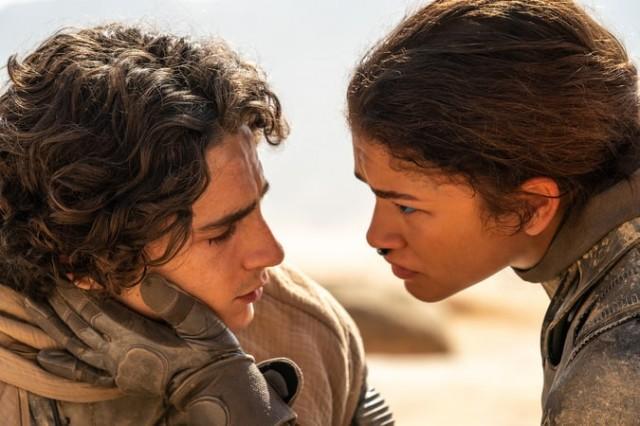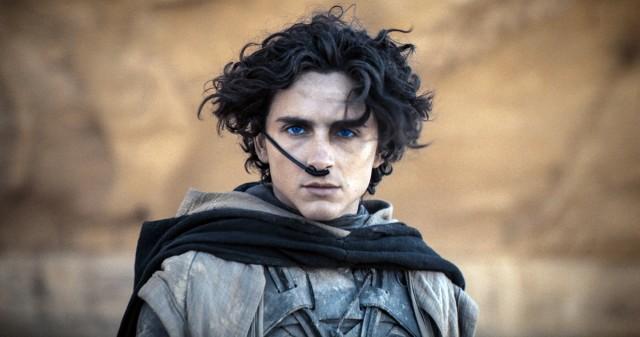Filmmaker Denis Villeneuve on how he made 'Dune: Part Two' a cinematic magic

The sci-fi epic film of filmmaker Denis Villeneuve, "Dune: Part Two," created a huge sandstorm at the box office as it hauled $81.5 million at the domestic scene and $97 million globally opening through Sunday with a total haul of $178.5 million.
But the box office sensation is just icing on the cake as this sequel to "Dune" (2021) is also critically acclaimed. The movie ended up with 94% on Rotten Tomatoes.
With the young and talented cast composed of Timothee Chalamet (Paul Atreides), Zendaya (Chani), Austin Butler (Feyd-Rautha), Florence Pugh (Princess Irulan), the movie was directed and co-produced by Villeneuve, who co-wrote the screenplay with Jon Spaihts. It also stars Fil-Am Dave Bautista, Rebecca Ferguson, Josh Brolin, Stellan Skarsgard, Charlotte Rampling, Javier Bardem, Lea Seydoux, Souheila Yacoub and Christopher Walken.
The Guardian wrote, "The second Dune installment is jaw-on-the-floor spectacular. It elegantly weaves together top-tier special effects and arresting cinematography; it layers muscle, sinew, and savagery onto the bones of Part One. It's an inhospitable, brutal kind of beauty that Villeneuve has created – there's not enough lip balm in the universe to visit the sandblasted wilderness planet of Arrakis that look appealing. But this epic action picture, which follows the journey of Paul Atreides (Timothée Chalamet) from a cheeky whippersnapper who's a bit handy with a sword, to a feared warrior, to the prophesied leader of the Fremen tribe of Arrakis, is realized with a retina-searing intensity."
In a virtual press conference with Villeneuve, he talks about why it was important for him to make the movie a cinematic experience and how he did it.

One of the most talked about scenes is the black and white gladiator arena fight scene. Talk about reuniting with your crew, cinematographer Greig Fraser, editor Joe Walker, production designer Patrice Vermette, your costume designer Jacqueline West and everyone to really pull off that sequence and the conversations you had about that gorgeous aesthetic.
Denis Villeneuve (DV): It was important for me to bring as many people as possible from Part One. People who knew everything about the world we had just created. It was the first time that I was revisiting a world and I had never done that before. And working with the same partners meant that everybody knew exactly what I was aiming for, aesthetically, cinematic vocabulary.
Patrice Vermette, the production designer had already started to design the movie. As we were doing Part One. It was like taking extra time to start to imagine what could be in the future.
So, let's say that Part Two was already a work in progress. And the pre-production of Part Two was quite intense because we were in the award season, and it was a bit more compressed than Part One. Part One, I had more time to do research and development. But because we did our own work correctly doing Part One, there were a lot of things that, like for instance, the behavior of a sand worm under the sun or does it evolve, the look of the sand word. All the computer software that had needed to be designed for Part One.
Everything, all those tools, we had a big toolbox that was available to us, and we knew how to do it, so it allowed us to go a bit faster. That is why I was aiming for the movie to come out in November and the movie was ready on time, but it was very important for me to work with the same team as much as possible.
So "Dune: Part Two" is going to be a cinematic experience for a generation. This is what home theater cannot replace. Was that something that you kept in mind throughout the process, like the broader goal of true cinematic magic?
DV: That's the movie I love. That's the movies that created the spark in me to become a director, the movies that embrace the power of the white screen and that immerse yourself in their world. And yes, I'm absolutely in love with the theatrical experience and I'm trying the best I can to make movies that will find all their full power in a theater. And all the movies are written, designed, shot, edited, thinking about the white screen. And of course, the sound design is something that is quite important.
I don't think that maybe in the future the television will get better and better with the VR experience, maybe you will have some screen that could fill your field of vision. But it'll never add the definition, or the sound will never be like in a theater, you need space, you need oxygen around you to create that pressure on the idea, that impact. And I'm working hard with my crew to bring as notion of spectacle as much as possible.

DV: It's everything epic and the action, and that is not something that is that difficult to do. The thing that is difficult to do is to make sure that we don't lose focus on the intimate relationship, more precisely, the story between Paul and Chani. That's the heartbeat, as you said, of the movie, it's like the truth, their relationship will unfold all the drama of the film.
Through the eyes of Chani and Paul, we feel the political pressure, the cultural pressure, the oppression. I really constructed the movie focused on the tension between them. And so, I knew that, and I kept saying to my crew, "If we don't believe in their relationship, we don't have a movie." And that was my main focus during the whole shoot, to take care and to be as close to them as possible.
Jumping off of that, the relationship dynamics in the film are so incredibly intricate. Talk about how you worked with your actors to bring out the complexity of those relationships on screen. And you rounded up an incredible cast.
DV: The thing is that I don't know exactly how to answer your question. I will say that it's my job to make sure that I will create an environment around the camera that will be suitable, that will be as best as possible to bring concentration and focus and that the actor feel protected, safe, that the safe zone around the camera. And it's a thing that I've been told many times by actors that they feel almost like we are doing an indie movie, meaning that there's a feeling of family feeling around the camera, like an intimacy, a focus that I'm trying to protect them and I'm trying to make sure that the actors never feel the pressure of the big machine.
That's my job and I have big shoulders that I can deal with. I really try to make sure that they have the necessary space to connect with the emotion that I need to capture on camera. I will say that it's one of the reasons that we build sets and that we try to go as much as possible on vacation and to be surrounded by elements or things that create a reality around them. They can take everything around them for granted. It's there, it's real, and they can just focus on their relationship and the inner movement of their character.
Paul riding the sandworm was an important scene. How did seeing Timothee riding it compare to what you had imagined and invented? What was that like seeing that come to life?
DV: The scene is my great deep, pure joy. Exactly how I dreamed of that scene. It's like it was by far the most complex thing I have ever attempted to do. It required a lot of work, but I was trying to feel a level of realism. I wanted my mother to believe that it was possible to ride a sandworm. I wanted it to be edgy, elegant, dangerous, and exciting. And it was like it required a tremendous amount of work from my crew to be able to bring that to the screen. But fortunately, we all knew that the studio believed in the scene a lot and they gave me the means and the tools to do it correctly.
The sets are incredible. What was it like for you? Was there a set in "Dune: Part Two" that you walked into and was like, "Oh my gosh, we built this world?!"
DV: It's a good question because there's a lot of them that each of them was quite stunning and jaw-dropping, frankly, because of the size and because of the level of precision of the details. If you walk into the beach, for instance, yes, it was grandiose. It was walking into a cathedral, a huge church. But at the same time, if you get close to the walls, you see all the writing of the Fremen prophecy, which was actually a real language that Patrice and David Peterson had worked on, and that meant something. It was kind of the level of detail.
The production design was quite impressive. I will say that my favorite set maybe was a cave of birds. It's like a natural formation that Patrice recreated outside in Budapest, and it was very poetic. You felt that you were inside the skeleton of some kind of huge animal. It was really interesting. By far, the most poetic place I've been to as a filmmaker.

DV: The thing is that I love, I try to bring some kind of nuance on screen. I hope that things are not one and zero or black and white, that things are more nuanced. Pure evil exists, but it's rare. I mean, most of the time it's a matter of perspective. And of course, no one will question that the Baron Harkonnen is evil. But if you take a character like the Emperor, is someone that is squeezed with the political game and made very bad decisions. But is he pure evil? I'm not sure about that. It's like there's something that is a technocrat that is a coward, but still has...I like to try to bring a little bit of nuance.
And the thing that is important is that when Frank Robert wrote the first book, he had some very precise intentions. He wanted the book to be seen as a cautionary tale, a warning toward Messianic figures. And he was disappointed with how the book was perceived when it was released. He felt the readers were thinking that Paul... It was a celebration of poetry, and he wanted Paul to be an anti-hero. So, in order to correct that perspective, that perception, he wrote a second book called "Dune Messiah," a tiny book that is a kind of epilogue that tried to correct the perception of the first book. And me knowing that I try to make this adaptation closer to Frank Herbert's initial intention, which is that the movie is a warning. It's not a celebration of Paul. Paul becomes something that he condemned. He betrayed the people. He fell in love with the culture, he fell in love with it.
As a director, what's been the most rewarding aspect of working on the "Dune" project so far, and how has it evolved or changed your approach to filmmaking going forward?
DV: It's a big question because I just finished the movie. I'm still digesting. But I would say that it's always interesting for me when there are some specific moments that you are shooting and you feel that there's a door that's happening and that there's a new space camera work and I felt that at specific moments doing Part Two, saying that, "OK, in the next project, that's where I need to go." And it's something that always amazed me.
It's like a sculpture. You sculpt and suddenly you see an opportunity and you discover something in the practice where you could actually improve as a filmmaker. And I feel that each movie brought me forward and there's always this idea that you can be better. It's like that's what brings the necessary fuel to make another movie.
What do you think it is about the story of "Dune" that has made it so popular for all these decades and loved by audiences?
DV: I think that the poet's disease identity quest is something that's quite moving. That is the fact that a boy will finally find a home and consolidate his identity in another culture. That I think is something that is quite beautiful and something quite moving. It's also a book that brings a lot of hope to the idea of the human spirit.
The idea that in this book... And it's not something that necessarily is exploring the movie, but in the book, the idea that AI has been banned, that the human spirit is there to triumph, and that the idea is to improve humanity instead of improving machines is something that is a message of hope and quite a powerful message.
There's also all the exploration of the impact of the ecosystem on human beings and how we are related to the ecosystems and how we should reestablish this notion, the sacred quality of our relationship with nature. Instead of trying to dominate nature, to be in harmony with nature, and respecting nature as the Fremen do, I think it's something that speaks a lot to the youth.
—MGP, GMA Integrated News



